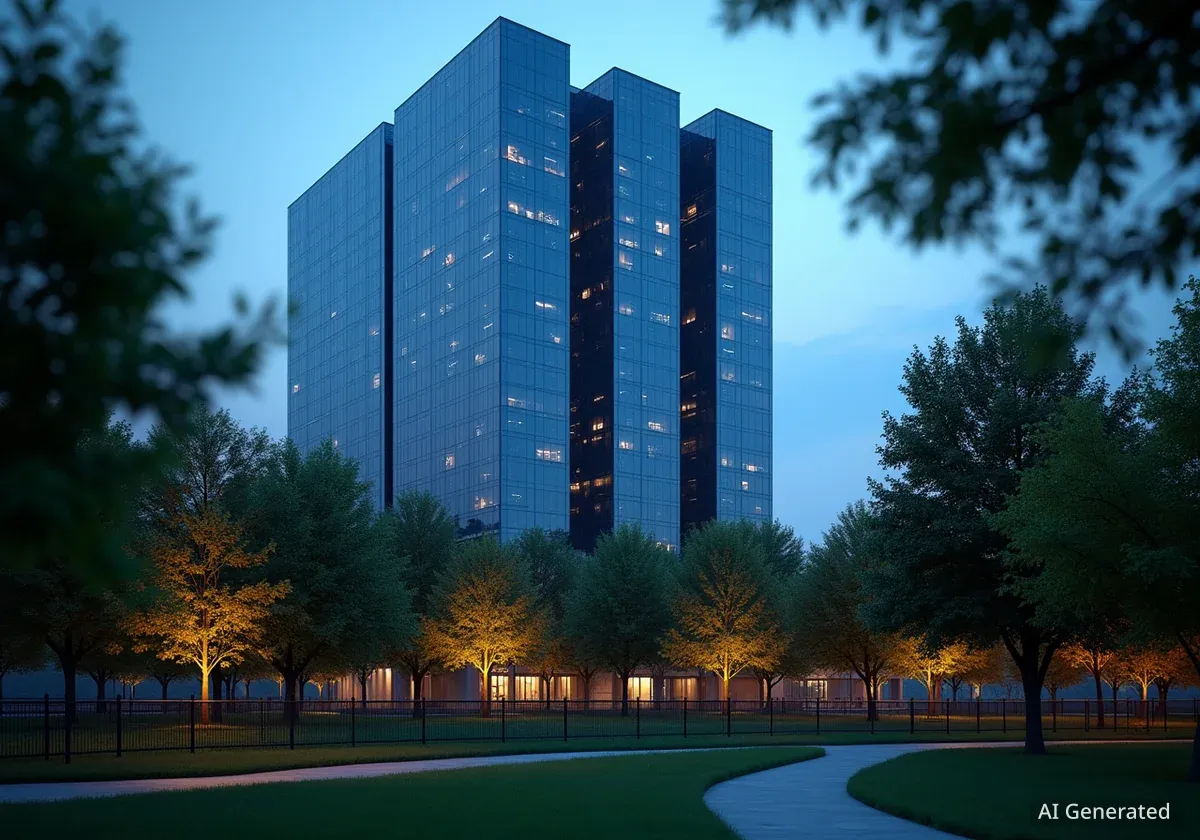A state district court judge has dismissed a lawsuit against Blueprint Data Centers, allowing the company's large data center project in Taylor to proceed. The legal challenge, filed by five local residents, aimed to halt construction on land they claimed was designated for a public park. Judge Ryan Larson ruled that the residents lacked legal standing in the case, denying their request for an injunction.
Key Takeaways
- A lawsuit against Blueprint Data Centers' Taylor project was dismissed.
- Residents claimed the land was promised for a park in a 1999 deed.
- Judge Ryan Larson ruled residents lacked legal standing.
- The data center will be 135,000 square feet for data storage and AI.
- Opposing residents plan to file an appeal.
Court Dismisses Residents' Legal Challenge
On Wednesday, a state district court judge ended a lawsuit that sought to stop Blueprint Data Centers from building a large facility in Taylor. The lawsuit was filed by five residents living near the proposed site. They argued that the land was meant to become a park, citing a 1999 deed. This deed indicated the property was granted to a nonprofit organization to be held in trust for future parkland use.
The residents' lawsuit also raised concerns about potential environmental, health, and safety impacts that a data center could bring to their community. They requested that all commercial development and construction on the property be stopped.
Project Details
- Location: Southeast Taylor, Texas
- Size: 135,000 square feet
- Purpose: Housing servers for data storage, artificial intelligence processing, and other advanced computing needs.
- Purchase Price: $10 million from Taylor Economic Development Corporation.
Judge's Decision and Lack of Standing
Judge Ryan Larson granted Blueprint Data Centers' motion to dismiss the case. The judge agreed with the company's argument that the residents did not have legal standing to pursue the matter. Legal standing requires a party to show they have suffered or will suffer a direct injury from the action being challenged.
In addition to dismissing the case, Judge Larson denied the residents' request for a temporary injunction. Such an injunction would have temporarily prevented Blueprint Data Centers from continuing work on the site. Previously, the judge had blocked Blueprint from proceeding with any work while he reviewed the lawsuit.
"At its core, this is a property rights dispute: a generous family set aside land for a future park, and this change of use directly impacts a largely working-class community," a group of residents opposing the project stated in a Facebook post on Wednesday.
Community Response and Appeal Plans
A group of residents who oppose the data center project expressed their disappointment with the court's decision. They announced in a social media post on Wednesday that the plaintiffs are now preparing to file an appeal. This indicates their intention to continue challenging the development.
The residents emphasize that the dispute is fundamentally about property rights. They highlight that a family had intended the land for a future park, and they believe changing its use will directly affect their community. This community is described as largely working-class.
Understanding Data Centers
Data centers are facilities that house computer servers and associated components, such as telecommunications and data storage systems. They are essential for modern digital infrastructure, supporting everything from website hosting and cloud computing to artificial intelligence and large-scale data processing. These facilities require significant power and cooling infrastructure.
Blueprint Data Centers' Plans
Blueprint Data Centers acquired the site in southeast Taylor from the city's Economic Development Corporation last year. The purchase price for the property was $10 million. The company plans to construct a 135,000-square-foot facility. This building will house computer servers used for various purposes.
According to information on the city of Taylor's official website, these servers will be used for data storage, artificial intelligence processing, and other advanced computing needs. The development represents a significant investment in the region's technological infrastructure.
Expansion to Nearby Georgetown
The company's plans are not limited to Taylor. Blueprint Data Centers also intends to build a similar facility in the nearby city of Georgetown. This suggests a broader strategy for establishing data processing capabilities in the Central Texas area.
The development of such large-scale data centers often brings economic benefits, including job creation and increased tax revenue for the local government. However, these projects can also raise questions about land use, environmental impact, and community character.
Environmental and Community Concerns
Residents opposing the data center have voiced concerns beyond just the parkland deed. They worry about the environmental footprint of such a large facility. Data centers consume significant amounts of electricity and require extensive cooling systems, which can impact local water resources and energy grids.
There are also health and safety implications mentioned by residents. These could include noise pollution from cooling equipment, increased traffic, and the potential for heat generation in the surrounding areas. The long-term effects on air quality and local ecosystems are also points of contention for the community members.
The legal process for such developments often involves balancing economic growth with community interests and environmental protection. The appeal by residents indicates that this debate is likely to continue.




